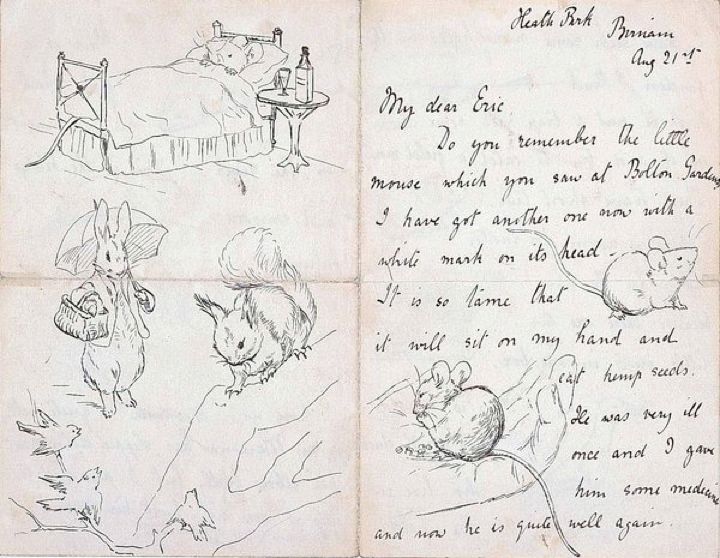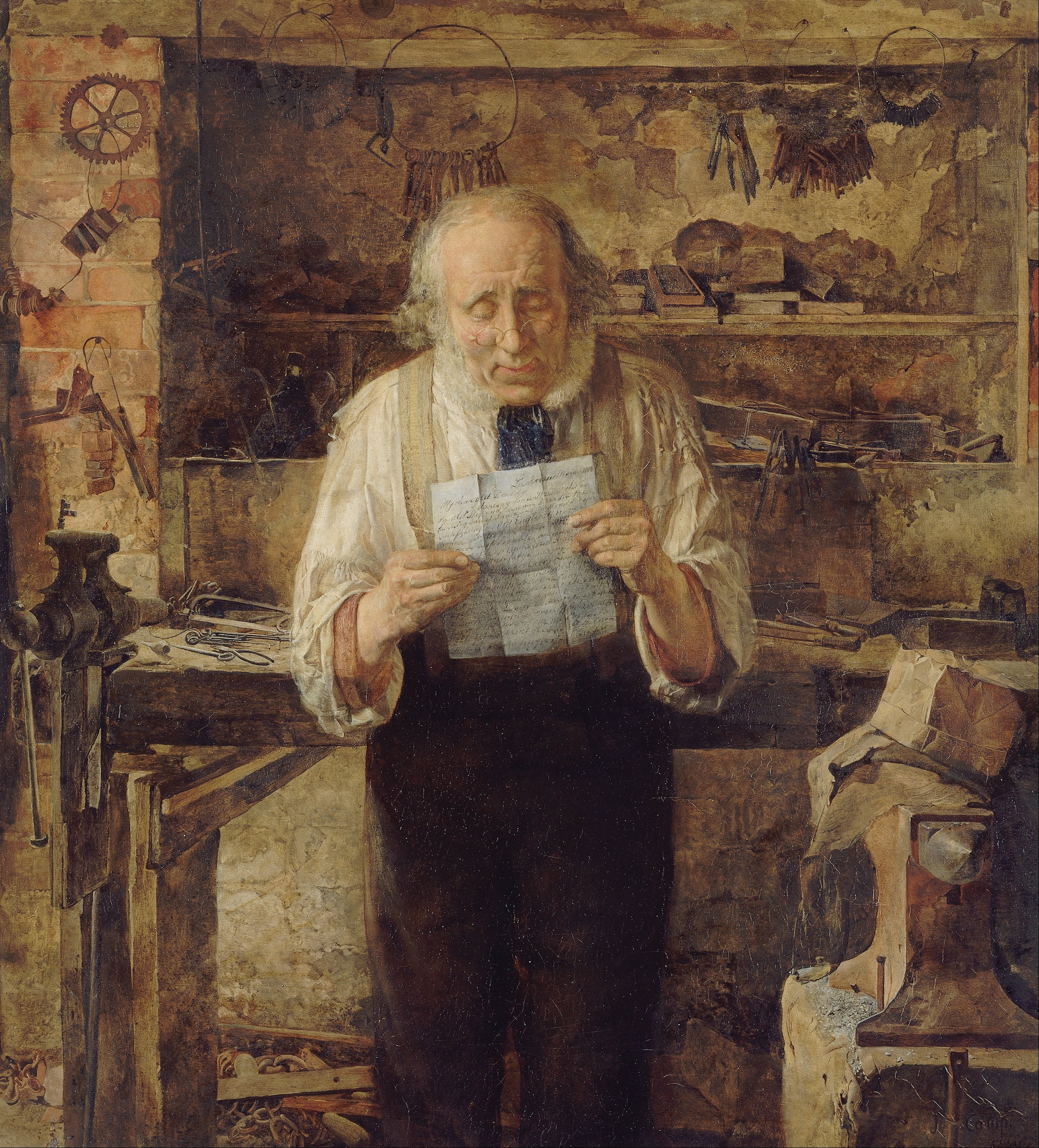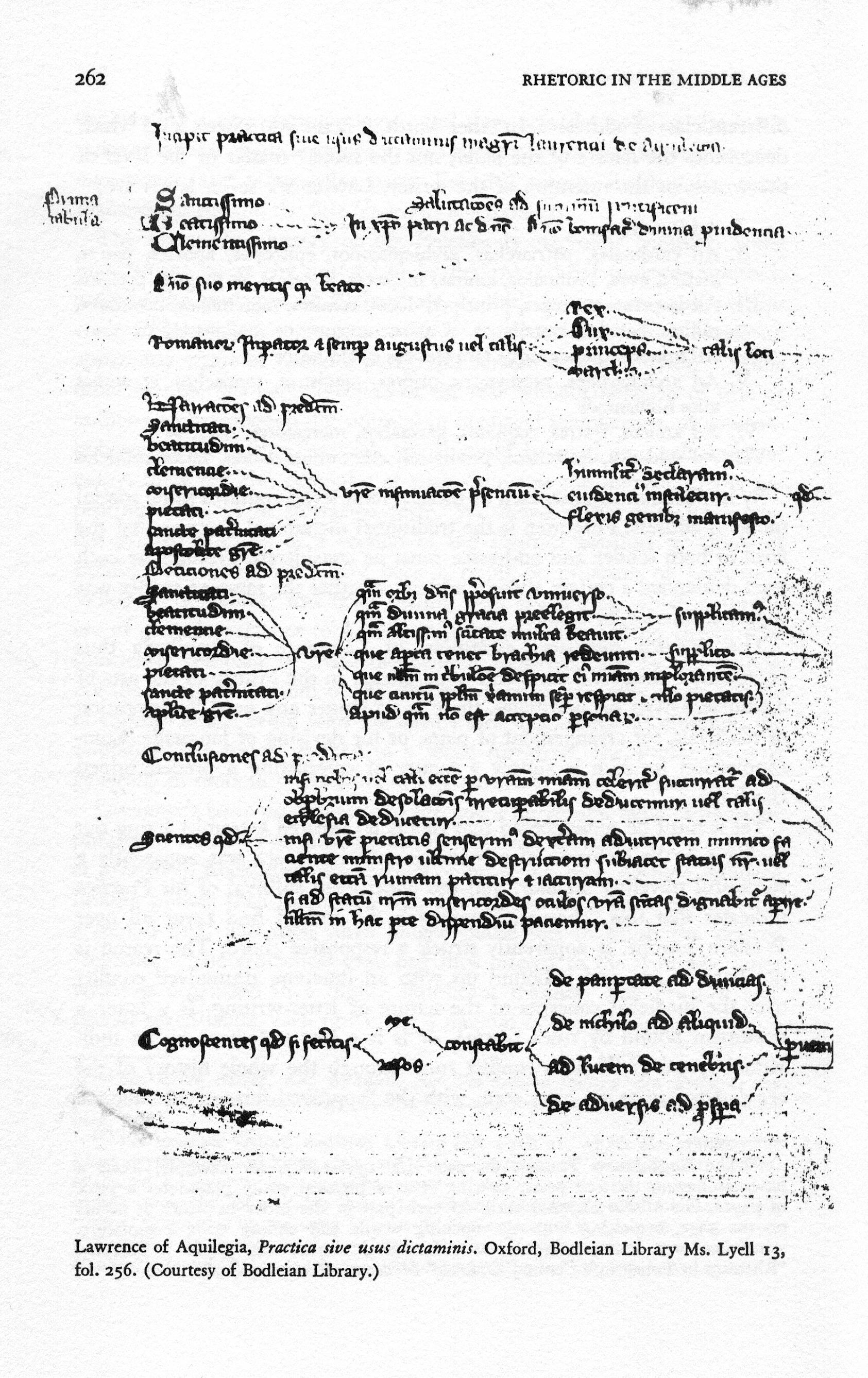|
Ars Dictaminis
''A''rs dictaminis (or ''ars dictandi'') refers to the art of letter-writing. The art of letter-writing often intersects with the art of rhetoric. History of Letter-Writing Greco-Roman Theory Early examples of letter-writing theory can be found in C. Julius Victor's ''Ars rhetorica'' and Cassiodorus Senator's ''Variae epistolae.'' Other examples can be found in the Pseudo-Demetrius' ''Typoi epistolikoi,'' Pseudo-Libanius' ''Epistolimaioi kharacteres,'' Demetrius' ''Peri hermeneias,'' Philostratus of Lemnos' treatise, and Gregory of Nazianus' ''Epistle 51.'' Latin Middle Ages During the Latin medieval period, the standing assumption was that these writings would be composed in Latin, and according to well worked-out models. This made the arts of composition a subfield of rhetoric. Medieval letter writing developed for ecclesiastical, government, and business purposes. Important figures in the early development of Latin letter writing and document composition inclu ... [...More Info...] [...Related Items...] OR: [Wikipedia] [Google] [Baidu] |
Rhetoric
Rhetoric () is the art of persuasion, which along with grammar and logic (or dialectic), is one of the three ancient arts of discourse. Rhetoric aims to study the techniques writers or speakers utilize to inform, persuade, or motivate particular audiences in specific situations. Aristotle defines rhetoric as "the faculty of observing in any given case the available means of persuasion" and since mastery of the art was necessary for victory in a case at law, for passage of proposals in the assembly, or for fame as a speaker in civic ceremonies, he calls it "a combination of the science of logic and of the ethical branch of politics". Rhetoric typically provides heuristics for understanding, discovering, and developing arguments for particular situations, such as Aristotle's three persuasive audience appeals: logos, pathos, and ethos. The five canons of rhetoric or phases of developing a persuasive speech were first codified in classical Rome: invention, arrangement, style ... [...More Info...] [...Related Items...] OR: [Wikipedia] [Google] [Baidu] |
Formulary (model Documents)
Formularies (singular formulary; Latin ''littera(e) formularis, -ares'') are medieval collections of models for the execution of documents (acta), public or private; a space being left for the insertion of names, dates, and circumstances peculiar to each case. Their modern equivalent are forms. Rationale It is practically inevitable that documents of the same nature, issued from the same office, or even from distinct offices, will bear a close resemblance to one another. Those charged with the execution and expedition of such documents come naturally to employ the same formulæ in similar cases; moreover, the use of such formulæ permits the drafting of important documents to be entrusted to minor officials, since all they have to do is to insert in the allotted space the particular information previously supplied them. Finally, in this way every document is clothed with all possible efficiency, since each of its clauses, and almost every word, has a meaning clearly and definitely i ... [...More Info...] [...Related Items...] OR: [Wikipedia] [Google] [Baidu] |
Homiletics
In religious studies, homiletics ( grc, ὁμιλητικός ''homilētikós'', from ''homilos'', "assembled crowd, throng") is the application of the general principles of rhetoric to the specific art of public preaching. One who practices or studies homiletics may be called a ''homilist'', or more simply a ''preacher''. Explanation Homiletics, the art of preaching, studies both the composition and the delivery of religious discourses. It includes all forms of preaching including sermons, homilies and catechetical instruction. Homiletics may be further defined as the study of the analysis, classification, preparation, composition and delivery of sermons. The formation of the Lyman Beecher course at Yale University resulted in an increased emphasis on homiletics. The published volumes of this series includes information regarding the history and practice of the discipline. Branch of pastoral theology The ''Catholic Encyclopedia'' defines homiletics as "that branch of rheto ... [...More Info...] [...Related Items...] OR: [Wikipedia] [Google] [Baidu] |
Ars Grammatica
An ''ars grammatica'' ( en, italic=yes, art of grammar) is a generic or proper title for surveys of Latin grammar. The first ''ars grammatica'' seems to have been composed by Remmius Palaemon (first century CE), but is now lost. The most famous ''ars grammatica'' since late antiquity has been that composed by Donatus. Donatus' ''Ars Grammatica'' Two ''artes grammaticae'' circulate under the name Donatus. The first, the ''Ars Minor'', is a brief overview of the eight parts of speech: noun, pronoun, verb, adverb, participle, conjunction, preposition, and interjection (''nomen, pronomen, verbum, adverbium, participium, conjunctio, praepositio, interjectio''). The text is presented entirely in a question-and-answer format (e.g. "How many numbers does a noun have?" "Two: singular and plural."). Donatus' ''Ars Major'' is only a little longer, but on a much more elevated plane. It consists of a list of stylistic faults and graces, including tropes such as metaphor, synecdoche, allegor ... [...More Info...] [...Related Items...] OR: [Wikipedia] [Google] [Baidu] |
De Conscribendis Epistolis
''On the Writing of Letters'' () was a popular Early Modern guide to the art of letter writing by Spanish humanist Juan Luis Vives. First published in 1534 in conjunction with Desiderius Erasmus' treatise of the same name, Vives's work attempts to teach letter writers how to engage a variety of audiences. Background In 1533, Vives wrote ''De conscribendis epistolis'' for Alonso Idiáquez, secretary to King Charles I of Spain. On the surface, Vives sought to help Idiáquez avoid what Vives saw as a popular misunderstanding of how successful letters should be written. Because this work was also published, it seems safe to assume Vives wanted to rectify the '' dictamen'' on a large scale. Since the early days of the Roman Empire, letter writers had attempted to apply the principles of oratory wholesale to epistolary composition. This approach remained popular well into the Renaissance. The result was a society of writers who did not observe practical decorum in their letters. Vive ... [...More Info...] [...Related Items...] OR: [Wikipedia] [Google] [Baidu] |
Victorian Letter Writing Guides
As the use of letters increased in popularity, guides began to emerge on how to correctly write and form a letter and as to what was proper, and what was not. Many of these Victorian conventions are a way of understanding tensions in nineteenth-century England, such as the urge to speak from the heart, but never more than was proper. Physical concerns A letter’s physical appearance, in addition to its content, was a concern for letter-writing guides. For men, guides advocated plain paper and for women, a light spritz of perfume was sometimes acceptable. Other sources, however, disagreed and suggested high outward ornamentation such as ribbons, flowery drawings, and interesting colors could be used by females, but part of this may have been the date of the guide, as vogue changed by the decade. Earlier in the century, ribbons were popular, but fashion changed to heavy cream paper in the 1880s and then monogrammed letterheads by the end of the nineteenth century. The manner of seali ... [...More Info...] [...Related Items...] OR: [Wikipedia] [Google] [Baidu] |
Letter (message)
A letter is a written message conveyed from one person (or group of people) to another through a medium. Something epistolary means that it is a form of letter writing. The term usually excludes written material intended to be read in its original form by large numbers of people, such as newspapers and placards, although even these may include material in the form of an "open letter". The typical form of a letter for many centuries, and the archetypal concept even today, is a sheet (or several sheets) of paper that is sent to a correspondent through a postal system. A letter can be formal or informal, depending on its audience and purpose. Besides being a means of communication and a store of information, letter writing has played a role in the reproduction of writing as an art throughout history. Letters have been sent since antiquity and are mentioned in the ''Iliad''. Historians Herodotus and Thucydides mention and use letters in their writings. History of letter writing Hi ... [...More Info...] [...Related Items...] OR: [Wikipedia] [Google] [Baidu] |
Chancery (medieval Office)
A chancery or chancellery ( la, cancellaria) is a medieval writing office, responsible for the production of official documents.Coredon ''Dictionary of Medieval Terms and Phrases'' p. 66 The title of chancellor, for the head of the office, came to be held by important ministers in a number of states, and remains the title of the heads of government in modern Germany and Austria. Chancery hand is a term for various types of handwriting associated with chanceries. Etymology The word ''chancery'' is from French, from Latin, and ultimately refers to the lattice-work partition that divided a section of a church or court, from which also derives chancel, cancel "cross out with lines", and, more distantly, incarcerate "put behind bars" – see '' chancery'' for details. In England In England, this office was one of the two main administrative offices, along with the Exchequer. It began as part of the royal household, but by the 13th-century was separate from the household and was ... [...More Info...] [...Related Items...] OR: [Wikipedia] [Google] [Baidu] |
Lawrence Of Aquilegia
Lawrence of Aquilegia (Lorenzo di Aquileia) was a thirteenth-century Italian canon and teacher. He is best known for his treatises on the ars dictaminis—the medieval art of letter writing. Lawrence’s major works found inspiration in Ciceronian rhetoric but introduced a new phatic element to writing and include the ''Summa dictaminis edita iuxta doctrinam Tullii'' and the ''Practica sive usus dictaminis edita ad utilitatem rudium''. The ''Practica'' is his most popular work and characterizes his pragmatic, phatic approach to letter writing through the use of tables. Biographical information In Cividale del Friuli in the northern Italian diocese of Aquilegia, Lawrence was born sometime before 1250. After studying the arts at Bologna (the hub of dictatorial study), he returned home and became canon of Aquilegia. As canon, Lawrence worked closely with the patriarchate, starting in 1269, where he assisted at the promulgation of the will of the recently deceased Patriarch of Aquilegi ... [...More Info...] [...Related Items...] OR: [Wikipedia] [Google] [Baidu] |
Gaius Julius Victor
Gaius Julius Victor (4th century AD) was a Roman writer of rhetoric, possibly of Gaulish origin. His extant manual is of some importance as facilitating the textual criticism of Quintilian, whom he closely follows in many places. References Attribution: * *''Rhetores Latini minores'', Karl Halm Karl Felix Halm (also ''Carl''; ''Karl Felix Ritter von Halm'' after 1872; 5 April 1809 – 5 October 1882), was a German classical scholar and critic. Life He was born at Munich. In 1849, having held appointments at Speyer and Hadamar, he ... (ed.), Lipsiae in aedibus B. G. Teubneri, 1863pp. 371-448 * ''C. Julii Victoris Ars rhetorica'', Remo Giomini; Maria Silvana Celentano (eds.) Leipzig: Teubner, 1980. {{DEFAULTSORT:Julius Victor, Gaius 4th-century Romans 4th-century Latin writers Ancient Roman rhetoricians Victor, Gaius ... [...More Info...] [...Related Items...] OR: [Wikipedia] [Google] [Baidu] |
Adalbert Of Samaria
Adalbert is a German given name which means "noble bright" or "noble shining", derived from the words ''adal'' (meaning noble) and ''berht'' (shining or bright). Alternative spellings include Adelbart, Adelbert and Adalberto. Derivative names include Albert and Elbert. Because St Adalbert of Prague (†997), early mediaeval missionary who became Czech, Polish and Hungarian patron saint, at his confirmation changed his name from native Vojtěch to Adalbert, this Germanic name has been artificially assigned to Slavonic Vojtěch/Wojciech ("he who is happy in battle") and via the same process have been the names Vojtěch and Adalbert connected with Hungarian name Béla (maybe "inner part") – so, in Central European settings these three names are taken as the equivalents, although they haven't any linguistic connection to each other. Given name * Adalbert (mystic) (8th century) * Adalbert Begas (1836–1888), German painter * Adalbert Czerny (1863–1941), Austrian pediatrician * ... [...More Info...] [...Related Items...] OR: [Wikipedia] [Google] [Baidu] |
Albericus Cassinensis
Alberic of Monte Cassino was a Cardinal in the Roman Catholic Church, who died in 1088. He was a cardinal from 1057. He was (perhaps) a native of Trier, and became a Benedictine. He successfully opposed the teachings of Berengarius, which were considered heretical by the Pope, defending the measures of Gregory VII during the Investiture Controversy. He is the author of numerous works in theology, hagiography, grammar, rhetoric and music; and is the author of the earliest medieval treatise on ''ars dictaminis ''A''rs dictaminis (or ''ars dictandi'') refers to the art of letter-writing. The art of letter-writing often intersects with the art of rhetoric. History of Letter-Writing Greco-Roman Theory Early examples of letter-writing theory can be ...'', or letter-writing (''De dictamine''). Many of his letters are found in the works of St. Peter Damian. One of his pupils, John of Gaeta, was the future Pope Gelasius II.I. S. Robinson, ''The Papacy 1073-1198'' (1990), p ... [...More Info...] [...Related Items...] OR: [Wikipedia] [Google] [Baidu] |
.jpg)



